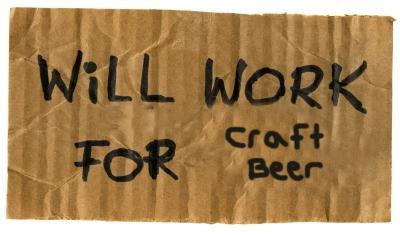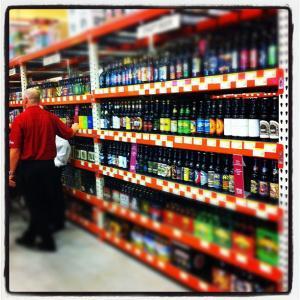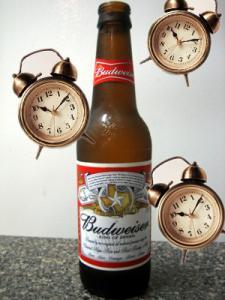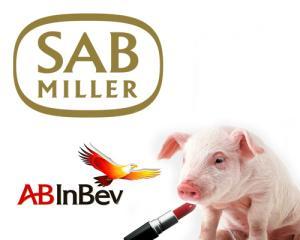
America’s recession may be over, but check the news and its ripple effects can still be felt…
In recent years, craft beer has soared in both public interest and as a business.
Statistics from the Brewers Association paint a glowingly rosy picture, as craft beer made up 6.5 percent of the sales volume of beer in 2012, highlighted by a 15 percent growth in volume.
Things are good in Suds City. But how did we get here? Yes, the growing movement by beer drinkers to, well, drink better beer has helped. But there are also outlying factors at stake, including the ongoing fallout of the Great Recession.
Much has been made about beer’s “recession proof” sales ability, but that’s not necessarily the case. Instead, what we have is the very curious tale of how the Great Recession helped define what today’s beer landscape looks like and quite possibly it’s future.
Let’s go down the rabbit hole.
There are lots if ways the recession changed the brewing industry, just like there are lots of ways it changed nearly every business in America. However, there seems to be some dotted lines connecting the impact of the economic downturn with several of the industry themes we see today.
Consumers Show Purchase Power

Typical scene in grocery stores and bottle shops today. (stevegarfield)
Some beers like Pabst Blue Ribbon made waves in 2008 and 2009 thanks to their low cost, a typical aesthetic result of economic disparity. However, studies have shown that despite conventional wisdom, people aren’t going out to get drunk all the time because business is bad. Beer – like food – is a “normal good” and one that declines in consumption with the economy. It’s a cyclical good – people typically drink more in good times and less in bad.
But – and this is a big but – craft beer sales soared. Sales went from $5.7 billion in 2007 to $12 billion in 2012.
Even more curious, there seems to be an inverse relationship among young people, who also tend to drink more beer. Half of Millenials (born between 1980 and 1992) drink craft beer. Why is this key? Despite being in one of the worst job markets in decades, young people are still flocking to craft beer, presumably while they also struggle to pay for everyday expenses like rent, groceries and student loans.
… and as AdWeek points out:
Naturally, as more millennials reach legal drinking age each year, the potential for still further growth in the craft market is enormous. Consider that this year the number of Americans in their 20s will hit 77 million, according to the Pew Research Center, about equal to the size of the massive baby boomers generation.
In an industry based around the idea of TV ads showing 20-something’s dancing around with their macro beer of choice, it seems more than ever these advertisements are working on older populations while young drinkers stick to brands that receive little – if any – advertising.
Local is popular. The little guy is more popular. So the question arose: how can macro beer become more popular in spite of this?
Big Beer Wakes Up
 The answer to that question, it seems, is for Big Beer to expand into craft beer territory.
The answer to that question, it seems, is for Big Beer to expand into craft beer territory.
This is not to say this move wasn’t already happening (because it was, to an extent). Because of the recession and the growing divide in attention between craft and macro brews, it may be safe to assume the economic problems of the country simply sped things up. While overall beer sales declined, craft beer boomed.
As with any well-run business, decision makers at places like SABMiller and AB InBev took notice: Beer as a whole wasn’t recession proof, but apparently craft beer was.
Us craft beer lovers are a tried and true folk. Between 2007 and 2009, 18 percent of consumers in any given category of packaged goods changed brand affiliation due to price. However, that wasn’t as much the case with craft beer:
… only 12 percent of beer buyers switched to cheaper brands. Of those, 31 percent said that their experience was more positive than they had expected, which means that only about 4 percent of customers are in play.
The demand for craft beer turned out to be inelastic. That is, people will continue to buy craft beer no matter the price because it’s good. Macro beer, on the other hand, has been found to be closer to static in regard to price and interest. This is why Big Beer is anxious to get crafty.
Big Beer Adapts
So now we have craft vs. crafty. We have Goose Island’s buyout and departure of brewery members. We have Bud Light Straw-ber-Rita and Justin Timberlake, creative director for Bud Light Platinum.

Big Beer can’t just put lipstick on a pig…
To some extent, these moves have worked. Diversifying beer portfolios either through buyouts or “crafty” enterprises help, somewhat. For those who are confused about what craft beer really is, they now have alternatives like Budweiser’s Black Crown, following in the footsteps of the ever-growing market share of Bud Light Platinum. Big Beer can also get artsy, offering creative print and bottle cap advertising to make their beer look like craft while tasting, well, different.
Even at baseball stadiums, macro companies are doing their best, setting up sites like the “Craft Beer Destination” at Yankees Stadium. A little marketing and distancing parent companies from their “crafty” children might go a long way. Or it might not:
So, let’s get this straight: big beer says it’s small brewers who want to force transparency upon consumers, but at the same time, it’s big beer who’s too afraid to put their name behind a brand. And that “discovery” process, a decade and a half after Blue Moon made clear its ties to MillerCoors, and two years after Anheuser-Busch purchased Goose Island, still elicits a negative reaction from a large number of beer drinkers who we see learn about those long-hidden ties to big beer for the first time.
It seems for now that we’re safe (emphasis mine):
A twentysomething couple who share their table with us weigh in on which Lagunitas variety is best (she likes less hops, he likes more) while they imbibe and munch on free peanuts. They live a few hours’ drive away but always stop by when they’re in the area for the music and brew. Money is tight, the man explains, “and for five or six dollars, we’d rather drink really good beer than mediocre wine.“
Notice “mediocre beer” isn’t mentioned?
So what now?
Well, Big Beer could push for tax breaks and make it cheaper for them to flood the market with their products, both “crafty” and macro.
Nano, micro and other small breweries can push for similar tax breaks, too.
What we do know is that while the Great Recession was hard on many – and continues to be – it was also hard on Big Beer. However, it also acted as a sort of catalyst that helped take us to the Craft Beer Promised Land by showing what a force it can be.
Most of all, it helped push us toward the state of the industry today.
What do you think? Are there other ways the broader economic issues have changed beer or how you buy beer?
+Bryan Roth
“Don’t drink to get drunk. Drink to enjoy life.” — Jack Kerouac

